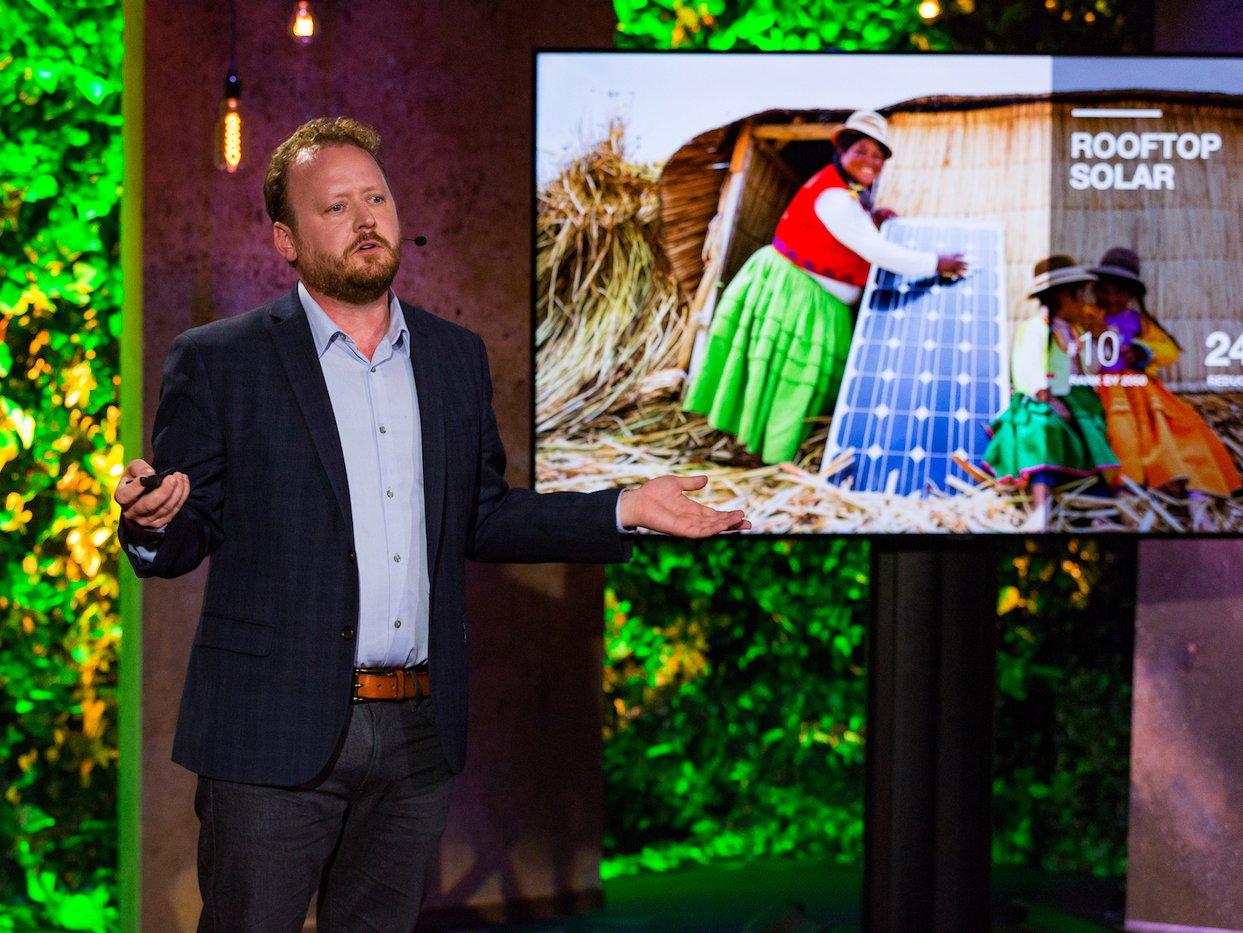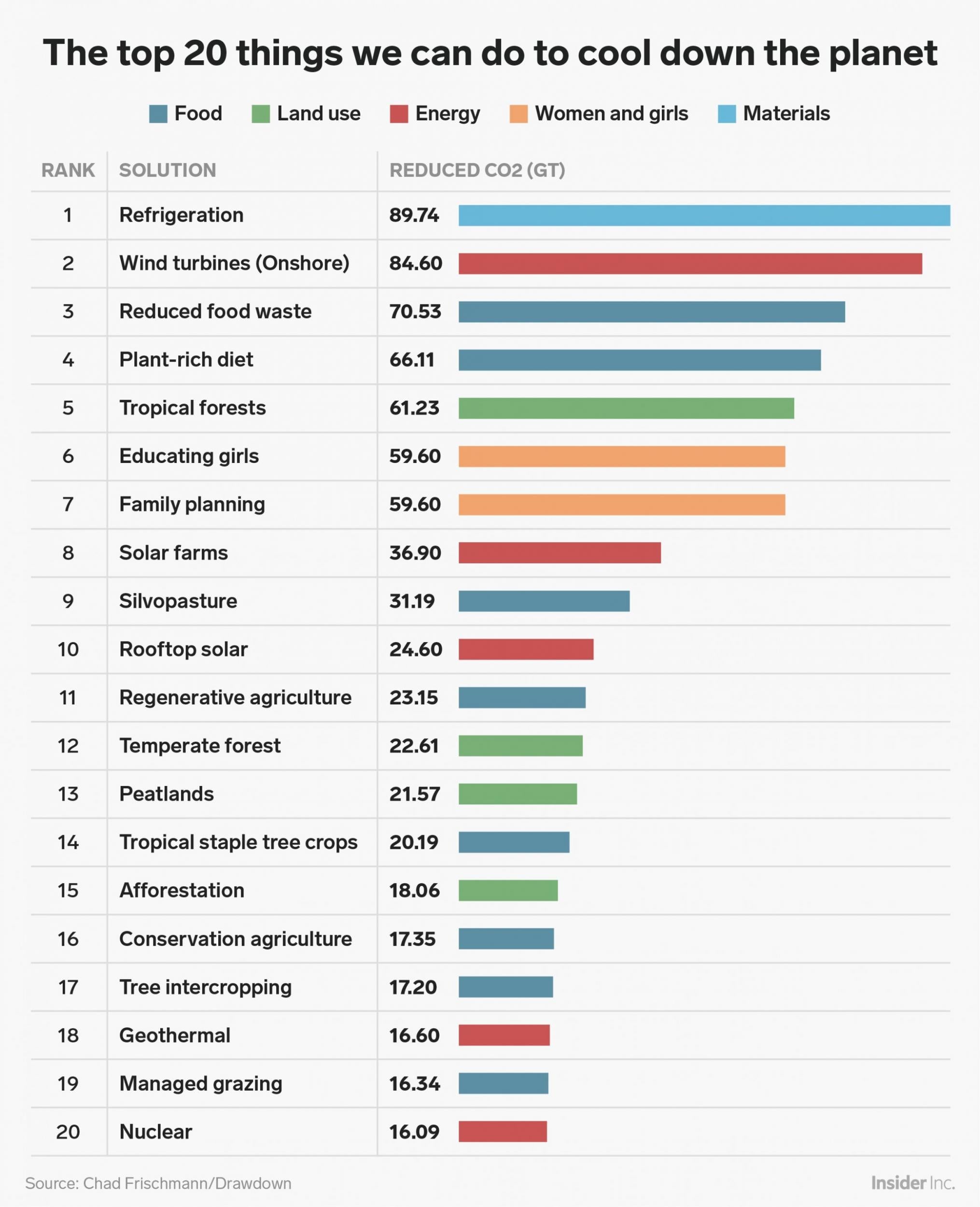20 things we could do right now to reduce climate change and prevent extreme poverty
Project Drawdown researches connections between cutting planet-warming emissions and stopping poverty, disease and malnutrition

There is a lot of fear and uncertainty going around about the future of our planet.
Sea levels are rising, we could soon face a "Hothouse Earth" scenario and severe flooding from torrential rains is expected to get worse. If the atmosphere keeps heating up, some towns could even be threatened by wayward icebergs.
But Chad Frischmann does not think things are so bleak.
He is vice president of an initiative called Project Drawdown: a group of scientists, researchers, and writers who have calculated how to cool the planet over the next 30 years by reducing the amount of greenhouse gas in the atmosphere. The two-pronged plan is designed to both cut planet-warming emissions from fossil fuels and also suck more carbon dioxide into the ground, largely via photosynthesis.
"Drawdown is a new way of thinking about and acting on global warming," Mr Frischmann told an audience gathered at TED's New York conference stage last week. As he spoke, world leaders were gathered on the other side of Manhattan at the United Nations, debating the best ways to solve extreme poverty, disease, and malnutrition.

Mr Frischmann said solving those issues and tackling climate change are part of the same puzzle. He is convinced his drawdown plan can improve lives around world by feeding the hungry and educating young minds, all while reducing the Earth's temperature a bit for future generations.
He listed the top 20 ways everyone — consumers, policy makers, food growers and energy providers — could reduce greenhouse gas emissions.
Some of the solutions he proposed are already in use; these include universal education, family planning, sustainable refrigerants, better farming methods and more wind power.
"We have real, workable technology and practices that can achieve drawdown," Mr Frischmann said. The problem is that the necessary changes to the ways we put food on the table and generate energy aren't happening fast enough.
"What we need is to accelerate the implementation," he said.
A wish list for the planet
Below is Mr Frischmann's ranking of the best ways to reduce greenhouse gas emissions, based on how many gigatons (billions of tons) of carbon dioxide emissions each approach could be expected to cut over a 30-year period.
The solutions are grouped into a few key topic areas, like energy sources, food and education of women and girls.
For example, according to Project Drawdown's calculations, by adopting a more plant-rich diet and eating less beef, we could cut more than 66 gigatons of carbon dioxide emissions over the next 30 years. Other solutions include changing the way we cool our offices and homes, using less fertiliser on crops, improving soil health, regrowing forests and restoring carbon-sucking peat bogs.
The cost of implementing all the solutions in Project Drawdown is estimated to be $1 trillion a year over the next 30 years, according to Mr Frischmann.
"I know that sounds like a lot," he said, but he reminded the crowd that global GDP is now above $80 trillion a year, so it would cost less than 1.25 per cent of our annual purse to enact these potentially planet-saving strategies.
Here are the top 20 things on the Project Drawdown list:

The number one way to reduce carbon dioxide emissions, according to the list, is to change the way we keep food and buildings cool.
Currently, air conditioners and refrigerators run on hydrofluorocarbons, also known as HFCs, which heat up the planet. HFCs will start being phased out in high-income countries in 2019 as part of the Kigali accord, but they will still be used in other corners of the globe, where incomes are rising and more people are buying fridges and A/C units. Plus, we will still have to make sure to properly dispose of all HFC-powered fridges and air conditioners; otherwise the refrigerant left inside could become a huge source of emissions.
But the number one solution to global warming may have nothing to do with energy.
Eight of the other 20 items on the list have to do with the way our food system is set up, from how we till and fertilise land to what we consume. That is something anyone can take action on right now, Mr Frischmann said.
"The decisions we make every day about the food we produce, purchase and consume are perhaps the most important contributions every individual can make to reversing global warming," he said, adding, "we don't need to cut down forests for food production. The solutions to reversing global warming are the same solutions to food insecurity."
But beyond food and farming, there is another powerful weapon that the Project Drawdown list does not fully highlight.
"Taken together, educating girls and family planning is the number one solution to reversing global warming," Mr Frischmann said.
Letting more girls continue their education, receive wanted contraception and space out their youngsters as they would like could cut around 120 billion tons of greenhouse gases that we would otherwise emit over the next 30 years, according to Project Drawdown's calculations.
That is because better control of the population size would reduce demand for energy, food, travel, buildings and all other resources on the planet.
Read more:
• These houses can survive natural disasters
• Bill Gates, Jeff Bezos, and other billionaires are betting on a bacteria that could change the way we grow food
• The Trump administration says the climate will warm by a disastrous amount — and there are few plans to address it
Read the original article on Business Insider UK. © 2016. Follow Business Insider UK on Twitter.
Join our commenting forum
Join thought-provoking conversations, follow other Independent readers and see their replies
Comments
Bookmark popover
Removed from bookmarks